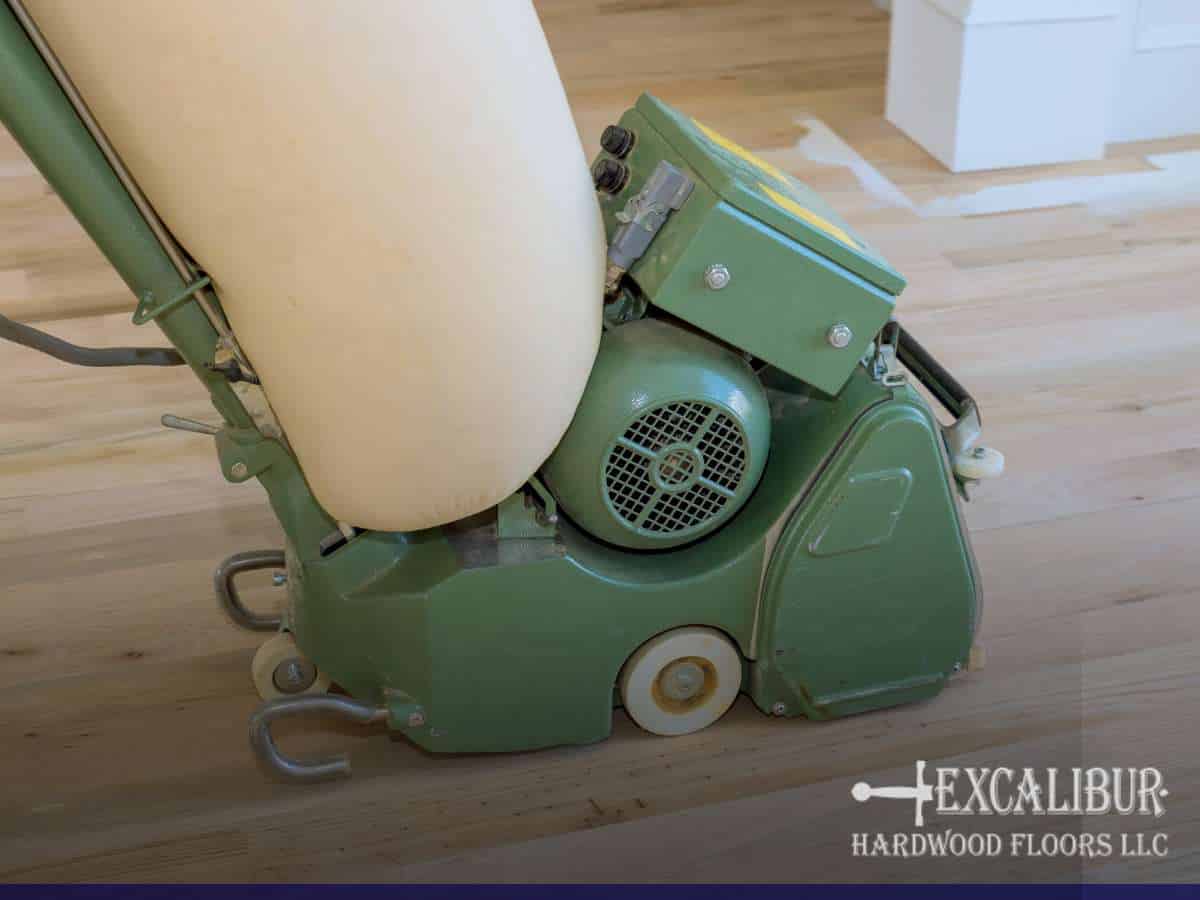Sanding vs. Screening: How To Choose The Right Gym Floor Refinishing Process
Key Factors To Consider When Choosing The Best Maintenance Method For Your Gym Floor
Did you know neglecting gym floor maintenance can shorten its life by 10+ years? With daily foot traffic, sports games, and wear and tear, gym floors will get dull and scratched. When that happens do you need a quick refresh or a full restoration? The answer lies in choosing between screening and sanding – two maintenance methods with different purposes.
Choosing the right one will save you time, and money and extend the life of your gym floor. Let’s break down the differences between sanding and screening so you can decide which one is best for your gym.

What Is Floor Screening & How Does It Work?
Screening is a light refinishing process that helps you maintain your gym floors in good condition without having to sand them down. It only removes the top layer of the floor’s surface, so it doesn’t affect the underlying wood, making it a less invasive way to refresh a gym floor. Plus, it’s not expensive.
The process is quite straightforward. It starts with a screen buffer used to lightly abrade the top coat of the finish. This process smooths out minor scratches, scuffs, and dull spots without cutting into the wood itself. After that, the professional applies a new coat of finish to restore shine and protection.
Pros & Cons Of Screening
Pros:
- Quick process; it’s usually done in a day or two
- Less expensive than full sanding
- It extends the life of the floor between major refinishing jobs
- No dust or major downtime, since it doesn’t strip the wood
Cons:
- Doesn’t fix deep scratches, dents, or discoloration
- Can’t remove stains or change the floor’s color
- If the finish is too worn down, screening won’t be effective
What Is Floor Sanding & When Do You Need It?
Floor sanding is a more intensive process compared to floor screening. This deep intensive treatment removes all existing finish and stain, exposing the bare wood beneath. Since it’s a full restoration method, it’s only used when the gym floor has extensive damage, such as deep scratches, visible tears, or discoloration that screening can’t fix.
Sanding maintenance removes all existing finish and stain, exposing the bare wood beneath. It’s a full restoration method used when a gym floor has extensive damage, deep scratches, or discoloration that screening can’t fix.
To start this process, professionals use a heavy-duty sanding machine that strips the floor. After that, they finish the process with refinishing and sealing.
Pros & Cons Of Sanding
Pros:
- It restores floors to like-new condition
- This process allows stain changes for a fresh look
- It eliminates deep damage and extends the floor’s lifespan
Cons:
- The process can take several days to a week
- More expensive than screening
- It generates dust and requires downtime before the floor is usable again
What Are The Key Differences Between Sanding & Screening?
Sanding and screening have different purposes, and they should be used accordingly. Here are their key differences so you can choose wisely:
- Process: Screening abrades the top coat of finish, while sanding removes all finish, stain, and a thin layer of wood.
- Depth of work: Screening is a surface-level treatment, whereas sanding is a full restoration down to bare wood.
- Best for: Screening is a great option for minor scuffs, dullness, and light scratches. Sanding is necessary for deep scratches, stains, discoloration, and heavy wear.
- Time required: Screening is a quick process, usually taking 1–2 days. Sanding is more intensive and can take many days or even a week.
- Cost: Screening is less expensive since it only involves a light refinishing. Sanding is more expensive because it requires more labor and materials.
- Impact on gloor: Screening preserves the existing wood and finish, while sanding resets the floor to a fresh, new surface.
- Durability: Screening provides a short-term refresh, typically lasting a few years. Sanding is a long-term restoration that can extend the floor’s life by a decade or more.
- Dust and mess: Screening generates minimal dust and disruption. Sanding creates dust and requires more cleanup.
How To Choose The Right Method
Deciding between screening and sanding depends on the condition of your gym floor. We recommend checking your gym floor mindfully to see its current condition. If your floor looks dull and has light scratches, then screening should be enough. However, opt for sanding if your gym floor has deep damage, discoloration, or a worn-out finish.
If you’re still unsure, run a water test. Simply pour a few drops of water on the floor. If it beads up, screening is likely enough. If it soaks in quickly, the finish is too worn, and sanding may be necessary.
You can also consult a flooring professional for the best advice.
Keep Your Gym Floor In Peak Condition With Excalibur Hardwood Floors
Gym floor maintenance requires choosing the right approach to keep the floor in top condition. Screening is a quick and cost-effective way to refresh the floor’s surface, while sanding is necessary for deeper damage and full restoration. But regardless of your choice, you still need to check your gym floor regularly and opt for screening whenever possible to delay the need for sanding and extend the life of your floor.
If you’re unsure whether your gym floor needs screening or sanding, don’t leave it to guesswork. Excalibur Hardwood Floors has the expertise to assess your floor and recommend the best solution. Contact us at Excalibur Hardwood Floors today for a professional evaluation and keep your gym floor looking its best for years to come!





